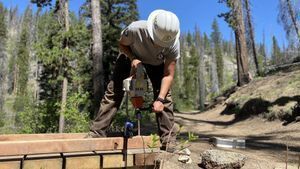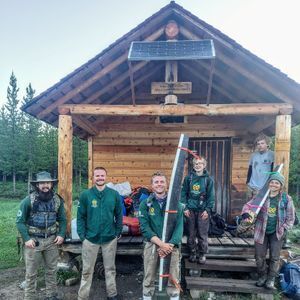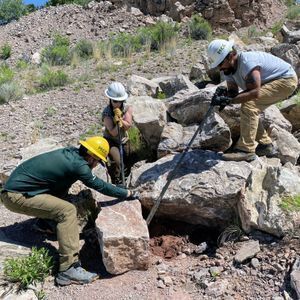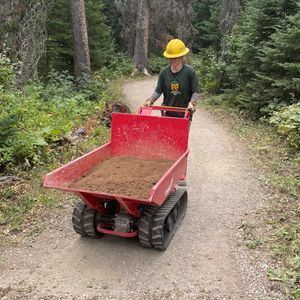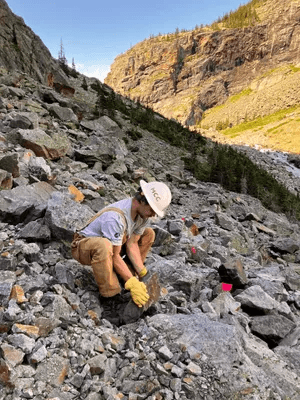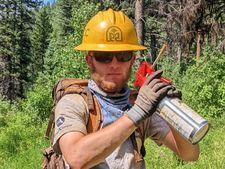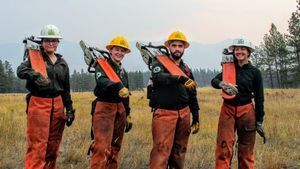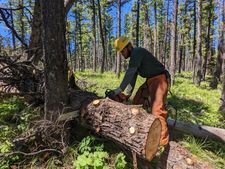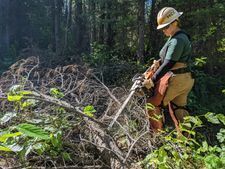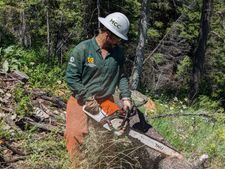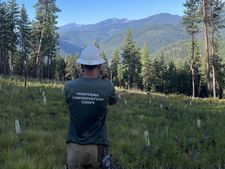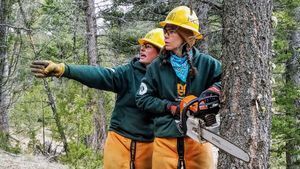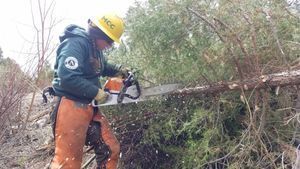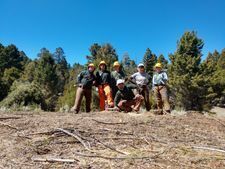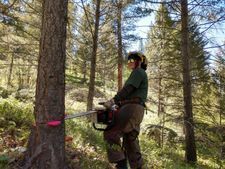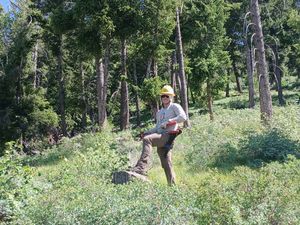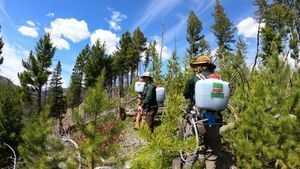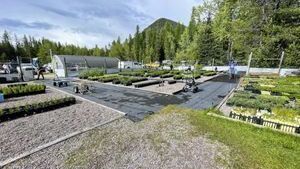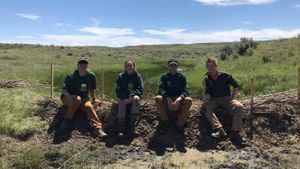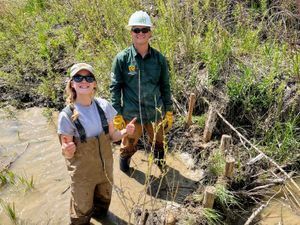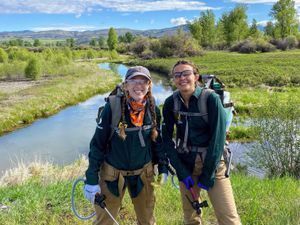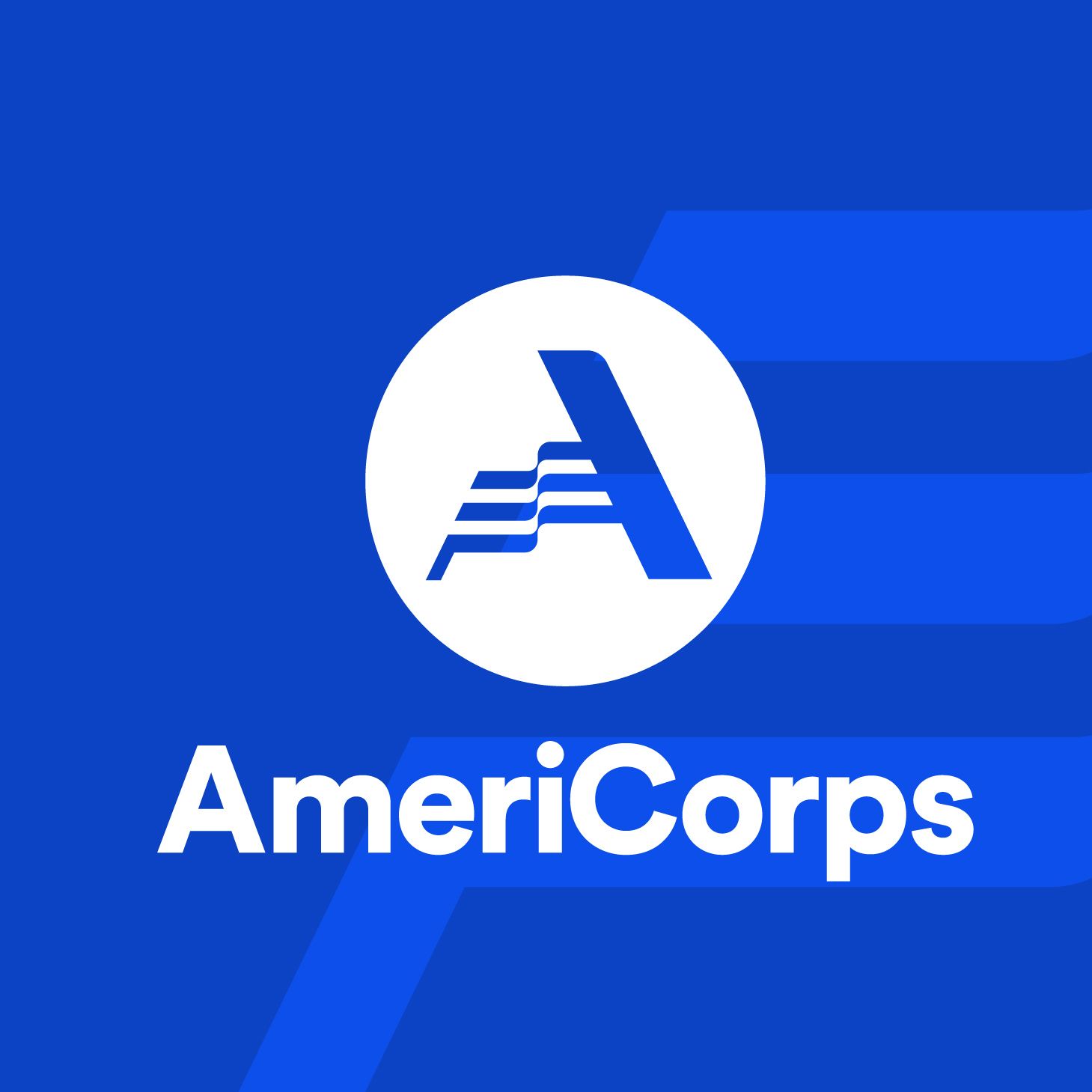What Your Day Looks Like
Montana Conservation Corps crews engage in a wide variety of projects across many different landscapes. Not all crews will work on all types of projects! Below are some examples of what you can expect to be doing in the field and the different types of project work MCC does.
Field Crews
Field Crews work on conservation projects while camping together as a crew in locations throughout Montana, Wyoming, Idaho, and the Dakotas. Project work is physically demanding, and could include trail maintenance and construction, habitat restoration, mesic restoration, planting, backcountry work, forest fuels reduction, and more. Field Crews are a great fit for anyone looking to get into the backcountry and for exposure to a variety of conservation work.
Forestry Crews
Forestry crews offer opportunities to gain considerable field experience in a variety of Forest Service timber management activities. Project work could include Tree Marking, Timber Sale Boundary Marking, Tree Planting, Silviculture Prescriptions, Reforestation Plot Surveying, Chainsaw Operations/Maintenance, Precommercial Thinning, Fireline/Fuelbreak Operations, and more. The project work varies between regional offices, and these crews often perform other types of project work that could include trail maintenance and construction, fuels reduction, forestry inventory analysis, and data collection.
Trails and Fuels Crews
Trails and Fuels crews work on projects to reduce the impact of wildland fire and restore habitat. Participants will have the opportunity to receive extensive training and potential certifications in wildland firefighting, including a nationally recognized chainsaw certification (S212), basic wildland firefighting classes (S130, S190, L180, IS100, IS700), in addition to having an opportunity to receive a wildland fire incident qualification “red” card. Project work will vary, but could include fuels reduction, habitat restoration, trail maintenance, and other conservation projects. Members may have the opportunity to do some prescribed burning in the fall portion of the season, should conditions allow.
Wildland Restoration Teams
Wildland Restoration Teams work with a diverse range of stakeholders (private, government, and non-profit) in order to achieve large scale land conservation efforts with rural communities throughout the state of Montana. Wildland Restoration Teams mitigate invasive plants through mechanical, chemical, and biological efforts. Crew use herbicide to manage invasive weeds, and MCC provides professional level training in the safe use and transport of chemicals. Crew Leaders also earn Herbicide Applicator Licenses, a certification through the State of Montana that is vital to future careers in invasive management. Wildland Restoration Teams may also work on a variety of other projects, including stream restoration, beaver-dam mimicry, non-native fish removal, fencing, planting, trail building and more.
Wildland Restoration Teams in Greater Yellowstone (Bozeman) typically spend half of their season managing invasive weeds through herbicide application. The other half of the season typically consists of mesic restoration projects (beaver dam analogs, or BDAs).
Wildland Restoration Teams in Northern Rockies (Kalispell) typically spend half of their season managing invasive weeds through herbicide application. The other half of the season typically consists of trail maintenance/construction, and other conservation projects.
Wildland Restoration Teams in Western Wildlands (Missoula) typically spend half of their season managing invasive weeds through herbicide application. The other half of the season typically consists of a combination of mesic restoration projects (beaver dam analogs, or BDAs), botany, forest inventory analysis, and other conservation projects.
Wildland Restoration Teams in Central Divide (Helena) will participate in a variety of innovative wetlands and habitat restoration projects, with a main focus on mesic restoration techniques including beaver mimicry and in-stream beaver-dam analog construction, a simple, effective, and non-invasive approach to riparian restoration. Crews will construct beaver mimicry structures (Low Tech Process Based Restoration) to effectively slow down and spread water over the landscape to expand critical habitat, mitigate wildfire, reduce invasive species and increase water availability in traditionally parched times of year.

![[Image description: Six MCC members stand in a field, two holding large crosscut saws, and two with mattocks in their hands.]](https://cdn.firespring.com/images/1f7e3469-816d-46d2-9d4a-920931bac740.jpeg)
